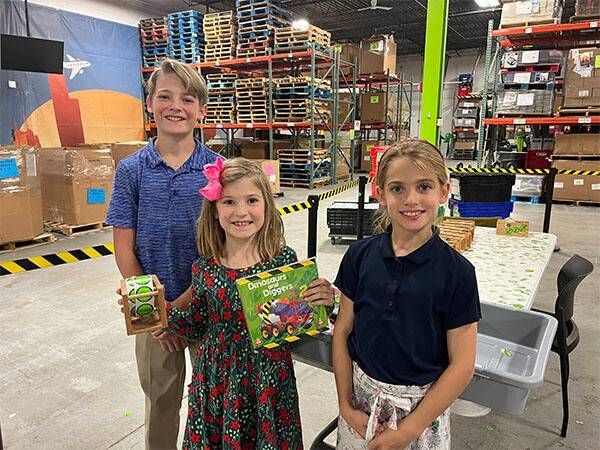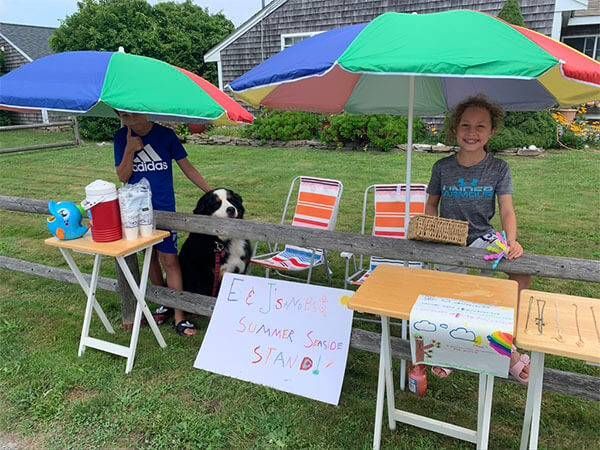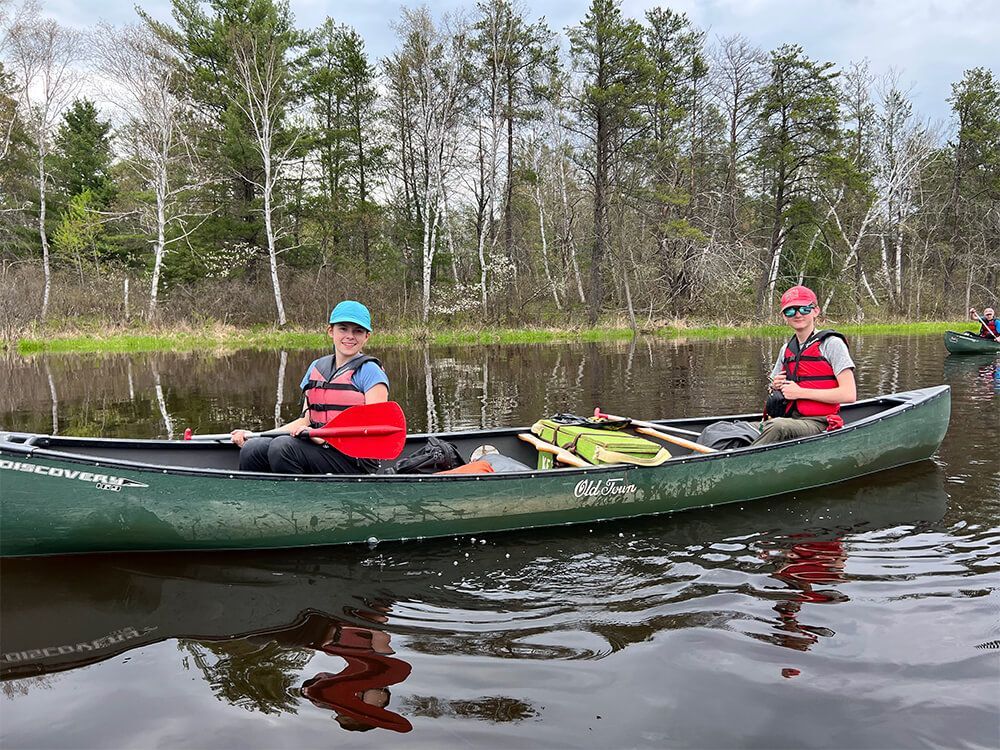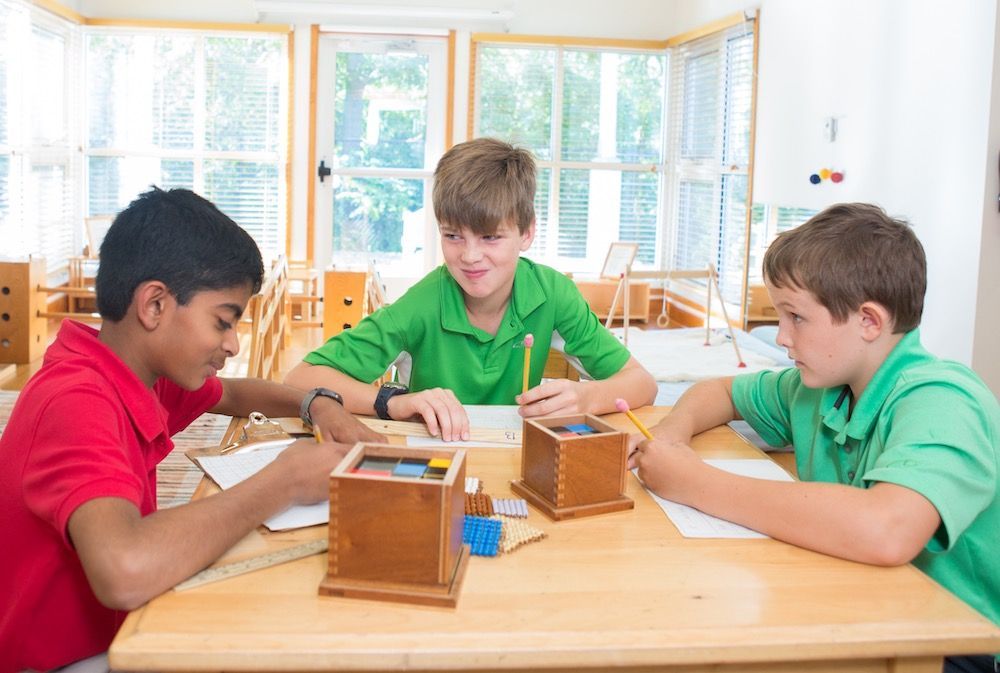
The beginning of the year provides us with an opportunity to practice intentionality and thoughtfulness in our values. We can establish these qualities into our routines, carrying them through our experiences for the rest of the year. Martin Luther King Jr. Day is an inspiration for many families as they consider how they can contribute to their community with compassion and action. January is an invitation to families to think about other people and the needs of the world around us.
Dr. Maria Montessori observed that humans are the only species who can imagine the lives of others and love people whom we have not even met. This capacity is unique to being human and is an important quality for us to encourage and nourish in ourselves and our children. Compassion and the ability to know how to help are two of the most important gifts we can give to humanity.
A Montessori Perspective on Service
There is no one-size-fits-all approach to community service with children. This concept does not belong only to Montessori, but it is a distinctive and persistent feature of the philosophy. A part of considering how best to find ways to volunteer with your children is by first understanding their phase of development. We know from Montessori’s observations that 0-6 year-olds do best with simple, hands-on activities that do not require prolonged efforts. 6-12 year-olds have a greater capacity for abstract work, and they are often motivated by social connection. 12-18 year-olds are ready for independence and deep engagement, and can understand more about why our world has the challenges that it has.
Additionally, every parent must know the idiosyncrasies of each of their children—how much to expose them to in order to cultivate their compassion and desire to help without overwhelming them. Some children can handle witnessing more of the world’s pain and needs, while others will shut down. While this capacity tends to increase with age, it also is individual to each person. A parent can best support their children when they are observant and sensitive to their personalities.
Talking About Service
Parents need to be sensitive to what kind of language their children are ready for when discussing why other families and communities have greater needs for donations than others. For the youngest children, a simple explanation will suffice: “For some families, it is harder for them to pay for the food they need. We are so lucky that we have enough. We can help make their lives easier by giving them food so they don’t have to pay for it.”
This kind of explanation works for a variety of services. Simply expressing that it is harder for other families and that your family is in a position to help creates the idea of a need for service without overwhelming their imaginations.
Older children may be able to handle more information, but parents should proceed cautiously. Children have active imaginations and porous empathy. We want them to love the world and believe in the magnitude of its goodness before presenting the entirety of the world’s problems to them. For the most part, we have the privilege of allowing the children at our school to spend their childhood unjaded so that they develop the capacity for hope. A palpable sense of hope and a belief in how good the world can be will inspire selfless action as they mature.
Ideas for Community Service
Book, Food, or Clothing Bank
These organizations all collect items such as books, food, or clothing and then distribute them to people, families, and communities who need them. Ask around your town or city to find one that has a simple donation strategy. Here in Lake Bluff, IL, where Forest Bluff School is located, Bernie’s Book Bank provides many opportunities for children of all ages to volunteer and contribute. The jobs at the facility range in simplicity. There are accessible tasks for young children, and there are more complex tasks for older children. The staff take the time to share stories about the families who are impacted by book donations, making the work feel meaningful.
For banks that don’t offer volunteer opportunities, it is easy to organize a drive, or to gather items from your house with your family. Older children can design flyers and go door-to-door in their neighborhood, collecting items from other homes. Younger children can help put food, clothes, or books in bags or boxes. They can take part in determining what they are ready to part with from your own home. And they can all help bring the items to the organizations, witnessing the smiles of the staff members and the way that their work becomes a part of greater efforts.
In all of these cases, it is important to gauge the capacity of each of your children. Parting with clothes they have outgrown is easier than parting with books that they may still love, even if they have technically outgrown them. And choosing food at the grocery store will be easier than parting with clothes. Nothing will be gained by forcing them to give things away that they are not ready to give away! If they are resisting identifying clothes or books that they do not need anymore, then leave the metaphorical door open for them: “I can see that you are still attached to your books. I love how much you love to read! I’ll check in another time to see if there are any that you are ready to give to another family.” For this child, they likely will be more receptive to a food bank. They can help you pick out their favorite kinds of canned or boxed food (or fresh food if your bank accommodates that), and then practice being generous in this way.
Cookie, Lemonade, or Hot Chocolate Stand
These kinds of stands tend to be more suited for older children, who can decide what items they will sell and help choose a charity or organization to donate proceeds to. Let them follow their passion and interest, and, to the extent that they can handle it, let them guide the research on what is important to them as they determine who to help.
The children can make signs, set up the table, prepare the food or drink in the kitchen, and then be responsible for managing the sales. Make sure they know how to tell passersby what they are raising money for! Point out to them how much people love donating for a worthy cause. Pro tip: If you have Venmo or Zelle, you can print a QR code for people to use to buy goods. This will help them catch people who do not carry cash on them.

When they finish their sale, invite them to participate in officially donating, whether it’s via check or on-line. Talk about who or what the charity serves, and when the donation acknowledgement letter arrives, give it to them so they can see the impact. Feeling pride in their work and knowing that it actually counts gives them confidence and motivation to do it again, perhaps in other ways, as they age.
A younger sibling can participate in the activity, too. Even as it may be more abstract for them to understand, it still feels good for them to know they are a part of it. Parents should exercise caution not to take over too much of the project. Let them make little mistakes or do things differently from how you would do it! If it’s your work, then it’s not theirs. Children are extremely sensitive to adult agendas and judgment, and will likely feel defeated or deflated if the activity becomes yours.
Helping Neighbors
Remember that not all community service has to be organized. Wherever you live, you have neighbors who can use assistance or help at different times. You may have an elderly neighbor who may need help shoveling their driveway, raking leaves, or bringing their newspaper to their front door. You may have a neighbor who has recently had surgery and may appreciate a home cooked meal or a grocery bag full of fresh fruits and vegetables. You may also have a neighbor with younger children, who your older child can read to or play with while their mother or father prepares dinner or washes the dishes. The possibilities are as endless as the lives of the people you know!
The beauty of learning to serve this way is that there are many options for children of different ages and abilities, as well as different spans of time and seasons. Learning to ask, “How can I help?” provides a foundation for community, friendship, and empowerment for the rest of your children’s lives.
Final Thoughts
With all the demands of the everyday world, it can be easy to let community service slip to the bottom of our to-do lists. There is, simply, so much to do. But it does not need to be complicated or perfect. It does not need to be extensive or precise. Simply speaking about it as a value, and then finding a simple, regular way to contribute to your community or your neighborhood sets the example for your children that we all exist in a web of interdependence. It shows them that we all have something to give. We can help our neighbors take out their trash, we can share cookies with the family across the street who just had a baby, and we can always add three extra cans of food for the local food pantry when we go to the grocery store.
We do not know exactly what kind of world our children will inherit as they enter adulthood. But we do know that when they step fully into it, we will need them to want to do something to make it better. This is one of our tasks as parents—ensuring that they are not helpless or hopeless. We want them to know that there is always something they can do, and that they can always be a force for goodness. The service we do with them now may look like a small tool, but it is a mighty one. It gives them hope, and it gives us hope too.


